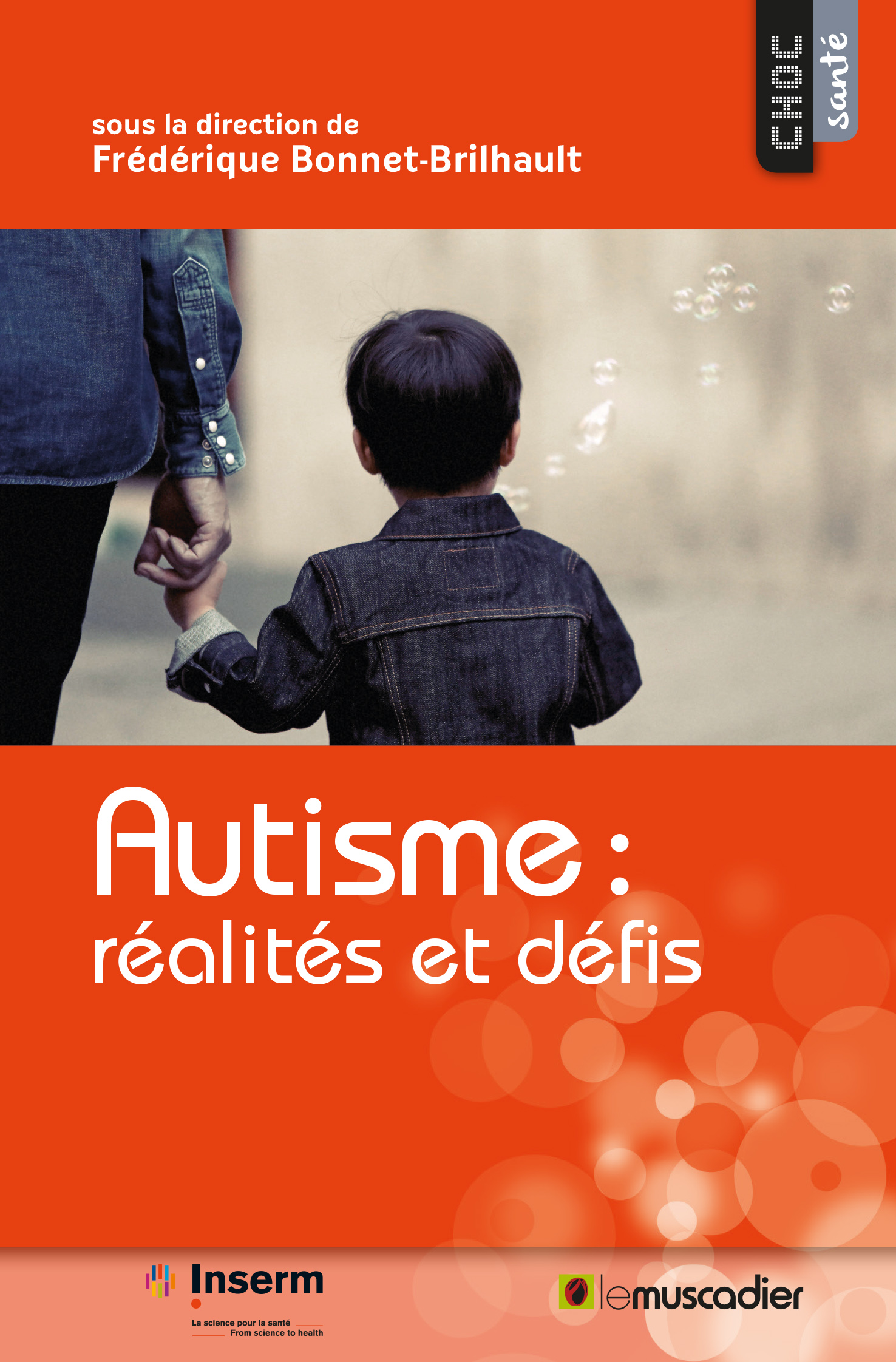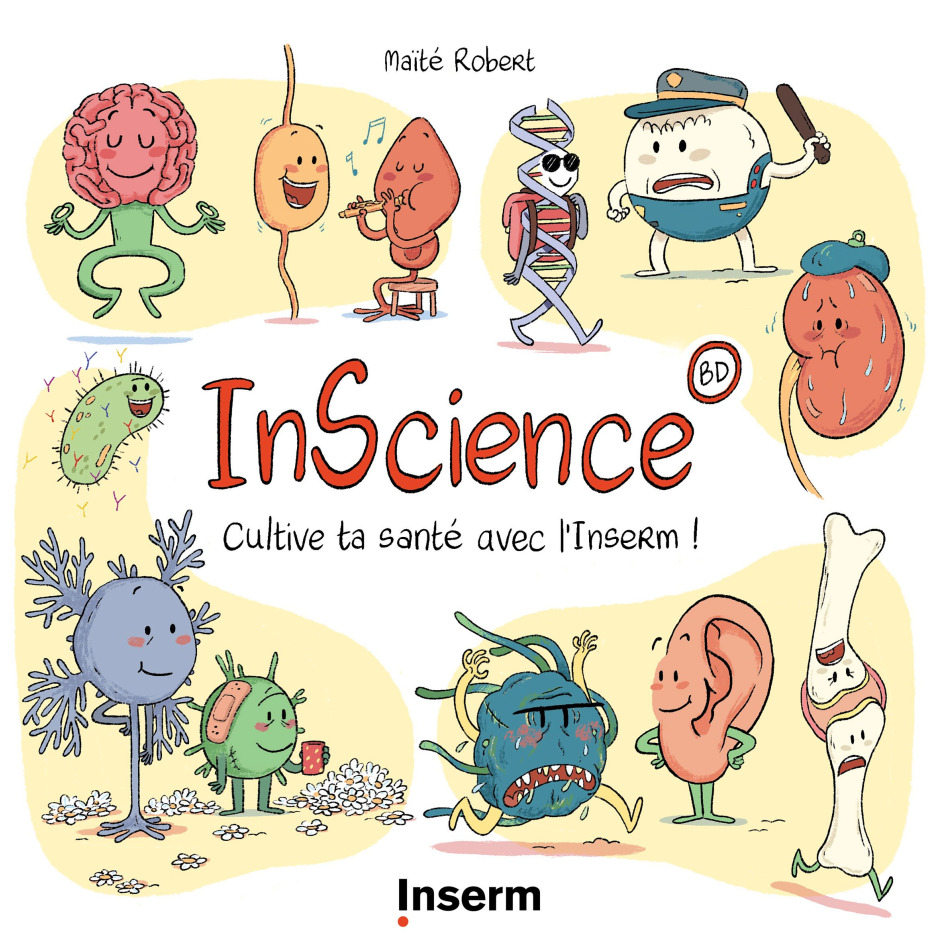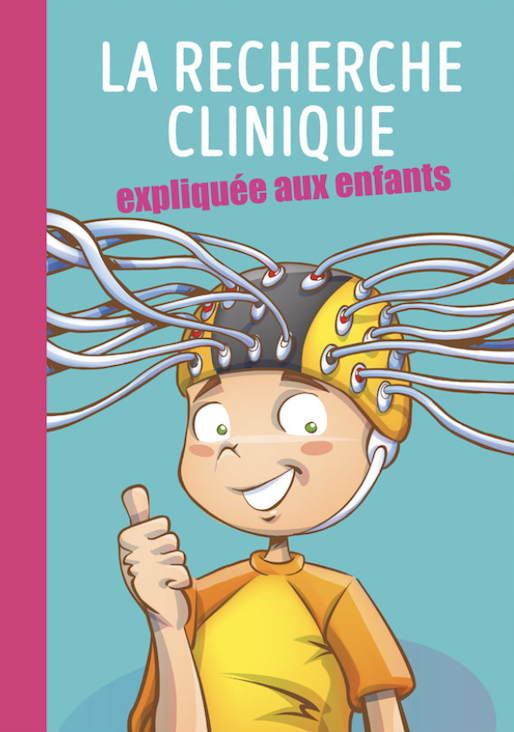Autism and Neurodevelopment
Co-Leader: Pr. Frédérique Bonnet-Brilhault
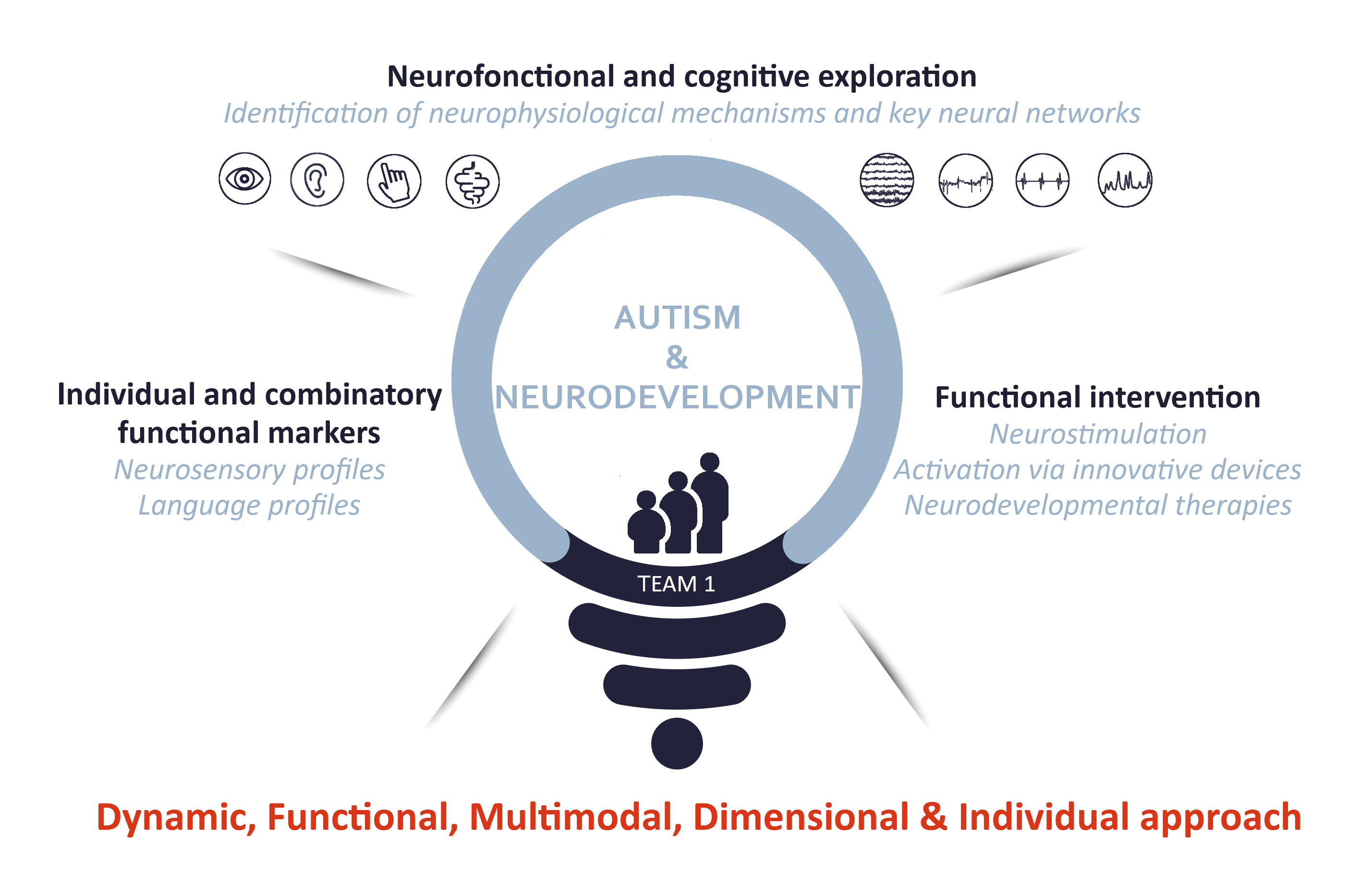
Strongly rooted in a hospital environment, and at the heart of ExAC-T (FHU and center of excellence for autism and neurodevelopmental disorders), which brings together clinical and academic partners on a regional scale, our team develops fundamental and clinical research closely associated with the concerns of people with autism and their families.
Our team’s project is thus built with the aim of improving diagnosis and therapy for autistic children and adults through advances in knowledge of the physiopathological mechanisms which underlie the observed symptoms and through identification of individual multidimensional profiles. In particular, adopting a translational approach which includes both thorough clinical description and a large variety of neurophysiological investigations (Electroencephalogram (EEG), eye tracking, fMRI), our multidisciplinary group (neurophysiologists, child and adult psychiatrists, linguists) intends to identify in autistic children and adults including elderly, and across the entire spectrum, key neurophysiological markers revealing atypical information processing related to behavioral difficulties.
Objective
To pursue this objective, the team project is organized around 3 main research axes.
Specific research axes
Neurofunctional and Cognitive Exploration
Here, we investigate brain circuit organization and reactivity in response to various stimuli with different levels of complexity and with or without socio-emotional content. This axis focuses on specific aspects of perception and cognition, including language, relevant for understanding the development of socioemotional and adaptive difficulties in ASD.We study different level of processing of information from sensory input encoding to cognition, through neurofunctional circuitry. This axis includes the study of :
- (Multi)Sensory processing, multimodal imaging
- Interoceptive awareness
- Context and change processing
- Perceptive style and visual art contemplation.
- Language
- Reward-system investigation
- Structural and functional connectivity
Individual and Combinatory Functional Markers
We strive to developp individual profiles that combines neurophysiological data, both central and peripheric, with clinical information but also with assessment of sensory processing and executive functions in order to identify functional markers of ASD. These functional markers would then be used to inform (ultra) early diagnosis and therapy, and its follow up but also aging in autism.Functional Intervention
Only 50% of autistic children show significant gains in response to treatment. In this research axis, we aim to better understand the lack of success of some intervention programs, and to develop functional therapy aimed at regulating the functioning of identified atypical neural systems. This research axis relies on the development or the use of innovative technologies.
Functional Groups
These research axes are transversal to the 4 functional groups identified within the team.
Brain explorations
Resp.: Dr. Marianne Latinus
Objective:To better understand the brain mechanisms underlying a wide range of cognitive function from sensory processing to attention, and the reward system.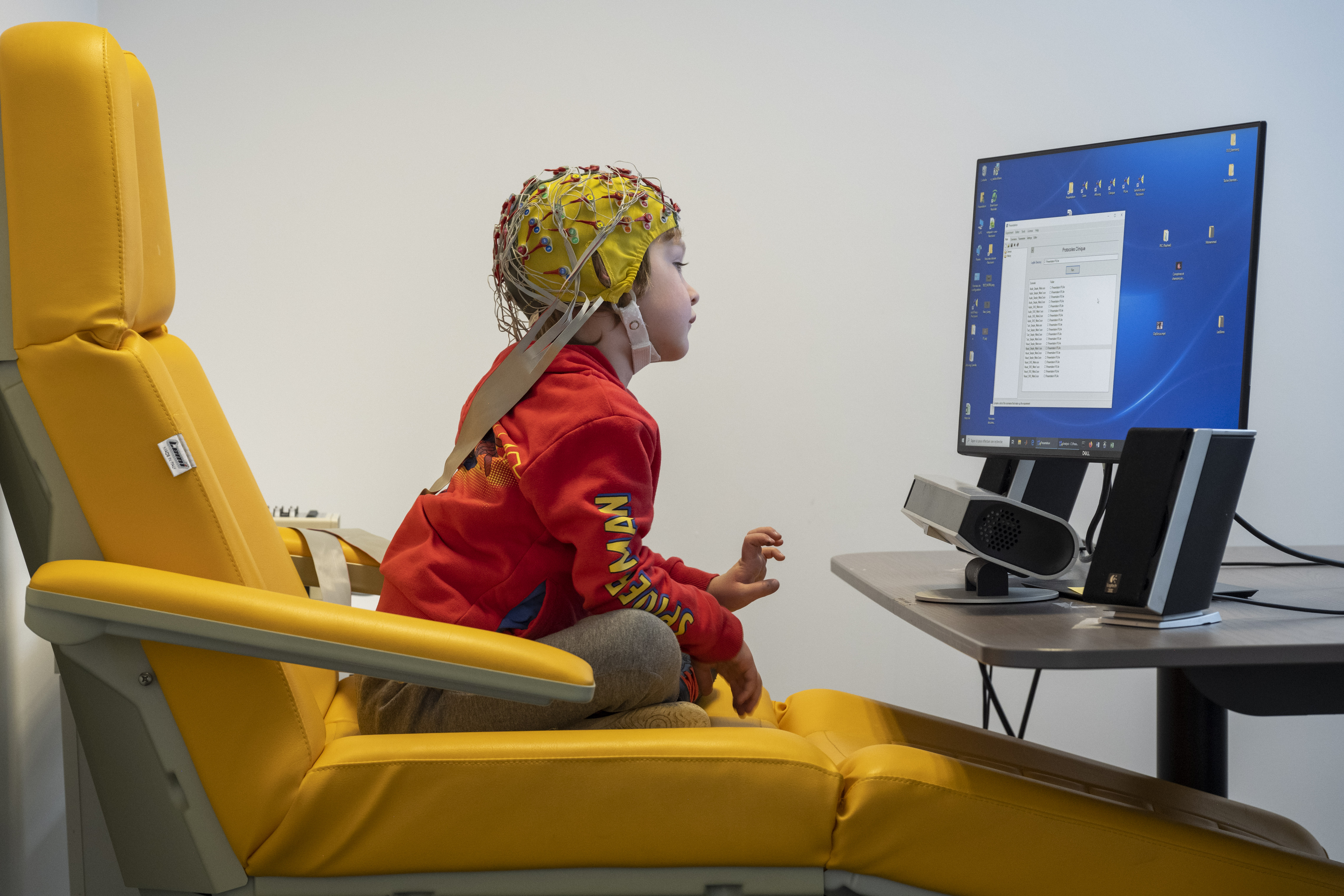
Several projects are currently underway:
- SEPIA (ANR) aims to investigate the perception representation-action loop involved in emotional prosody in Autism, through the emblematic model of vocal smile.
- RESYSTAA (iBraiN and EXAC-T), explores the reward system and its relation to sensory processing of both external and internal stimulation in social context in autism and food addiction. This project is a collaborative project that also involves Team 2 and 4 of iBraiN.
- SENSAURY (ANR) aims to create objectives plurisensory profiles of children (from 6 years old) with and without autism, and link these profiles to learning abilities.
- PILAe explores the functional plurisensory profiles of toddlers and their links to language profiles.
- VIA (Region CVL) is dedicated to the characterization of cerebral and cognitive aging in autistic persons.
Clinical explorations and innovative therapies
Resp.: Pr. Frédérique Bonnet-Brilhault & Dr. Thomas Gargot
Objectives: To improve early diagnostic and therapeutic practices in neurodevelopmental disorders thanks to technological innovation and digital psychiatry.
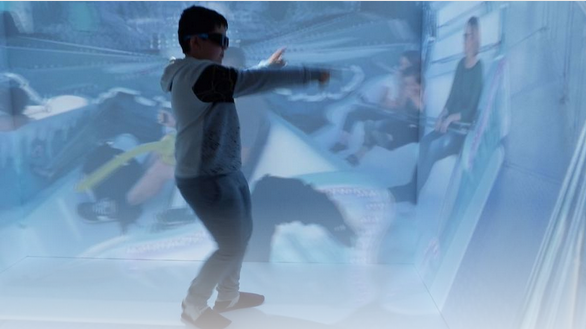
Several projects are currently underway:
- CONDOR: Project of a national cohort based on coordination and orientation platforms (PCO).
- SEVIRE (PHRIP): Clinical efficacy study with a VR cave system (Cube) in the treatment of audio-visual sensory difficulties in children with ASD with exposure therapy.
- OTO (John Bost Foundation): Design, acceptability study and pilot efficacy study of a deep pressure chair (OTO) for ASD.
- TAIA (ARS CVL): implementation and efficacy study of an iPad app for educative support (Learn Enjoy).
- TED-IA (ANR) relies on artificial intelligence to identify and improve synchronization sequences during exchange and development therapy.
Eye-tracking and peripheral neurophysiology
Resp.: Dr. Claire Wardak
Objectives: To explore how peripheral measures, indexing attentional orienting and physiological mobilization, can inform on typical and atypical sensory processing in several contexts, from low-level input in passive conditions to complex situations.
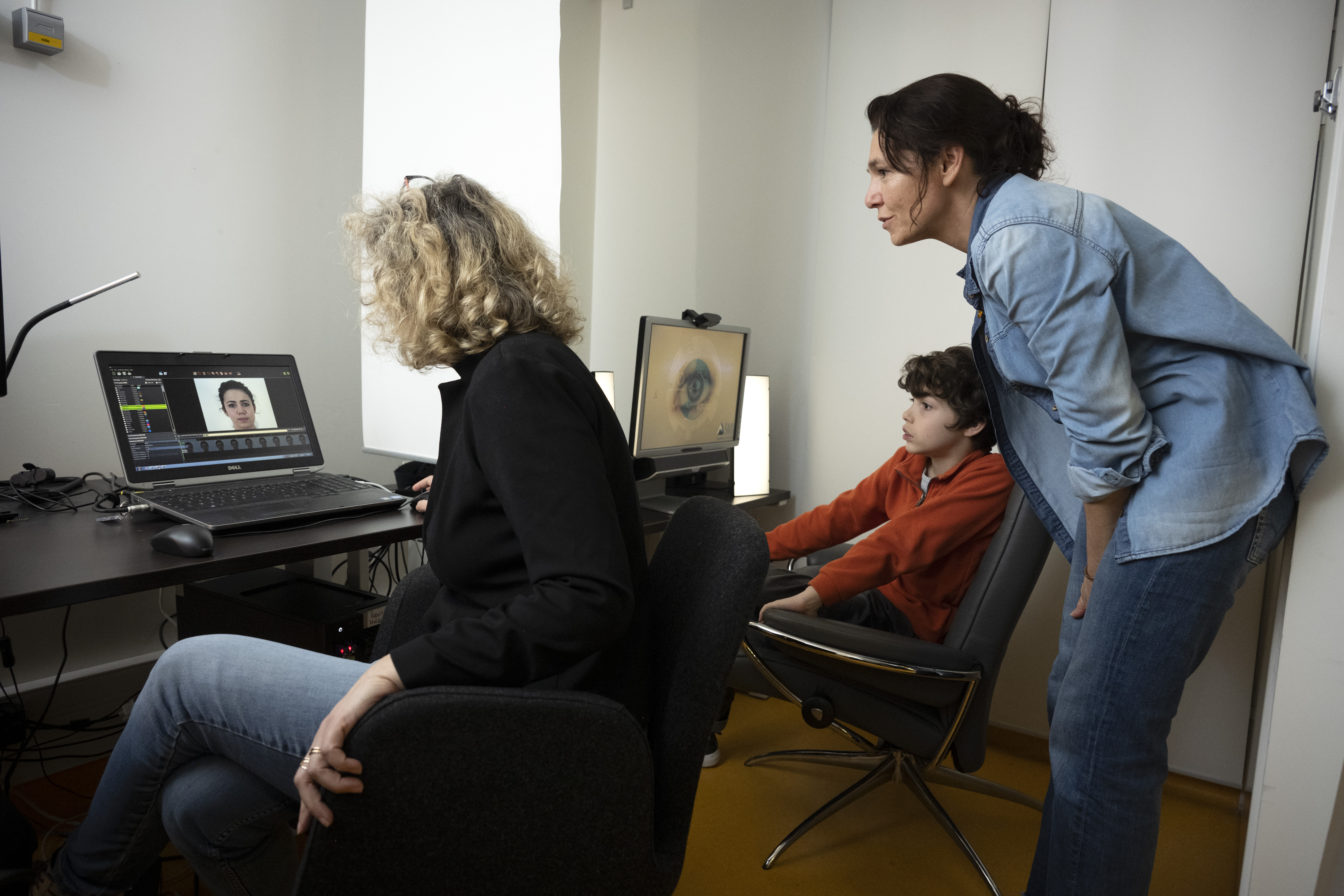
We rely on developmental, from toddlers to adults, and transnosographic, from autism to a range of neurodevelopmental disorders, approaches. The main tools used are eye-tracking, including pupil measurement, but also electrodermal activity, heart rate and respiratory rate.
Several projects are currently underway:
- SIRCUS (ANR) aims to investigate oculometry and pupillometry in response to social information in Autism in order to propose a screening tool in young children.
- ARTISM (Region CVL) is dedicated to the characterization of artistic paintings perception in autistic adults.
- SENSAURY (ANR) aims to create objective plurisensory profiles of children (from 6 years old) with and without autism, and link these profiles to learning abilities.
- BEYOND (FDF, FEANS, ExAC-T) explores oculometry and pupillometry parameters, in several contexts, in children (from 6 years old) with a NeuroDevelopmental Disorder.
Language Analysis
Resp.: Pr. Philippe Prevost
Objectives: To investigate typical and atypical language development, focusing mainly on ASD.

Different aspects of language are explored, including structural aspects (morphosyntax and phonology), pragmatics, prosody and written language, with the aim of identifying language profiles and how they interact with extralinguistic cognition (NVIQ, EF, etc.). Our studies use ‘autism-friendly’ assessment tools, such as sentence and non-word repetition, as well as tests requiring no active response from participants, such as EEG and eye-tracking.
Several projects are currently underway:
- LABA (ANR) investigates the effect of bilingualism on language development in autistic children, via studies involving Basque/French and Basque/Spanish bilingual children.
- VIA (Region CVL) is dedicated to the characterization of cerebral and cognitive aging in autistic persons, including language.
- PRESAD (ANR) explores, via a longitudinal study, the predictors of reading and spelling acquisition and disorders in children with or without Developmental Language Disorder.
- Y-JUSTLANG (COST Action) addresses the lack of consistent policies to establish the language abilities that children and adolescents need to possess in order to participate in justice proceedings effectively, despite the high prevalence of language impairment in the population of youth offenders.
- Q-BEx (the Harmonious Bilingualism Network, Belgium) aims to ensure the long-term sustainability of the Q-BEx tool, an online parental questionnaire meant to document children’s bilingual experience, which was developed following an international Delphi consensus study.


